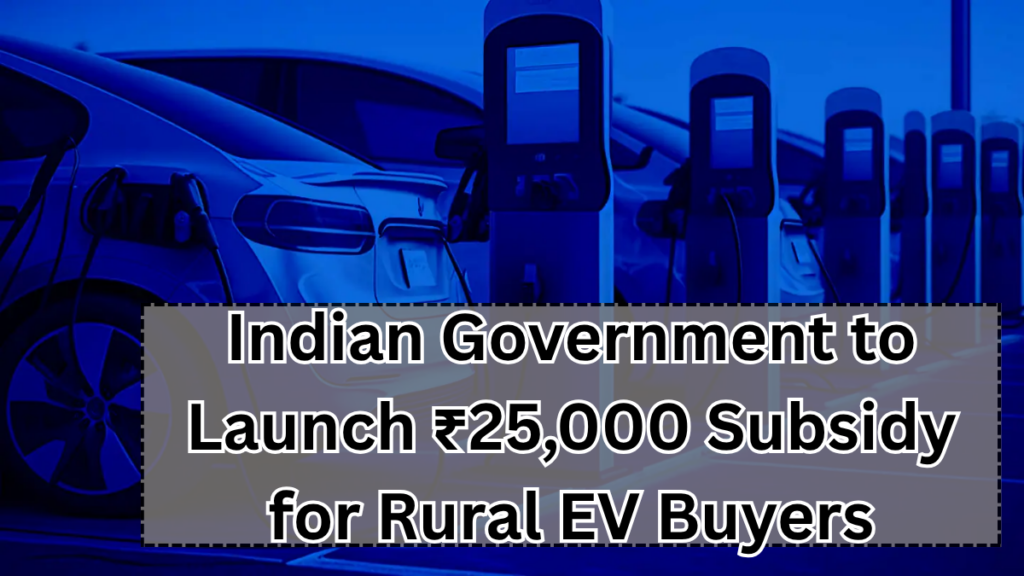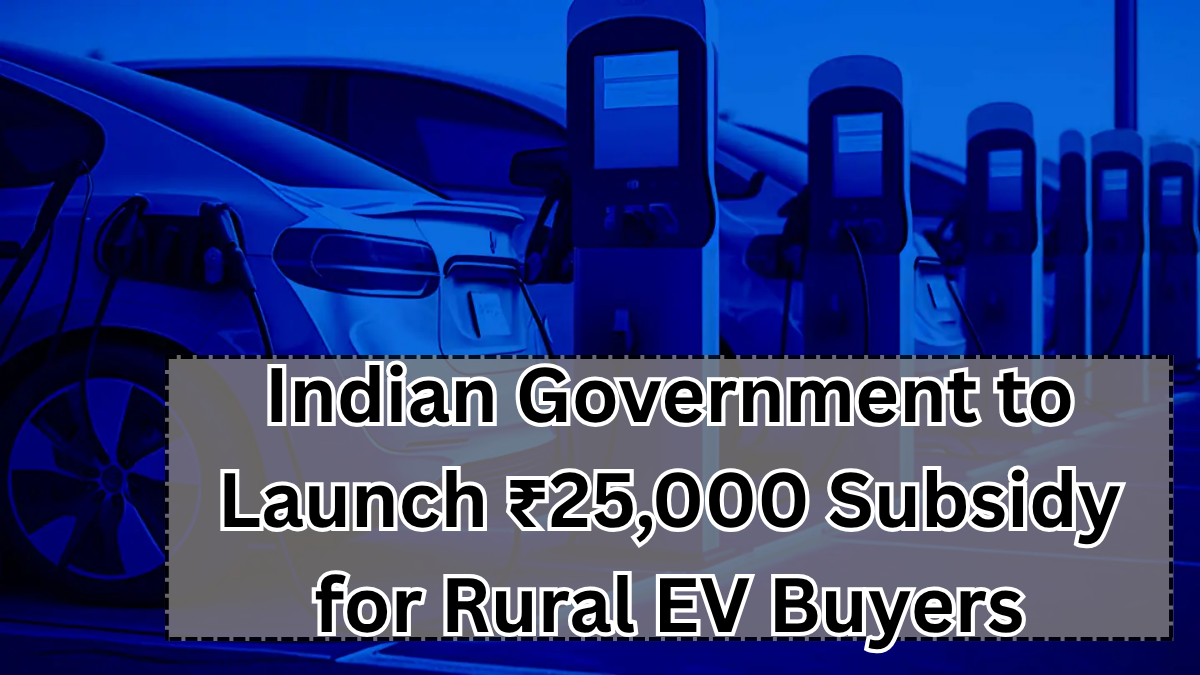In an exciting push toward a greener future, the Indian government is set to roll out a new EV Subsidy India 2025 scheme offering ₹25,000 subsidies specifically aimed at rural buyers of electric vehicles. This move is part of a broader rural vehicle policy designed to accelerate electric mobility across India’s villages and smaller towns.
Electric vehicles (EVs) have mostly been popular in urban areas so far. But with this new policy, the government hopes to bridge the gap and encourage rural communities to embrace cleaner transportation options, boosting sustainability and reducing pollution.

Why Focus on Rural Electric Mobility?
Rural areas form the backbone of India, housing nearly 65% of the population. Traditionally, these regions have lagged behind in EV adoption due to affordability, lack of infrastructure, and limited awareness.
With the introduction of the rural vehicle policy, the government is tackling these challenges head-on by:
-
Making EVs more affordable for rural buyers through subsidies
-
Creating awareness about the benefits of electric mobility
-
Encouraging manufacturers to expand EV offerings suitable for rural terrain and needs
-
Promoting cleaner and sustainable transport options to reduce pollution in rural regions
What Does the ₹25,000 Subsidy Mean for Rural Buyers?
Here’s what rural buyers can expect from the new subsidy scheme:
| Feature | Details |
|---|---|
| Subsidy Amount | ₹25,000 per eligible electric vehicle |
| Target Audience | Rural buyers and small-town customers |
| Eligible Vehicles | Electric two-wheelers and three-wheelers |
| Purpose | Boost electric mobility in rural India |
| Policy Launch Year | 2025 |
This incentive significantly lowers the upfront cost, making EVs more accessible and appealing to rural consumers.
How Will This Impact Electric Mobility in Rural India?
The introduction of the EV Subsidy India 2025 under the rural vehicle policy is a major step toward:
-
Increasing EV penetration in rural areas
-
Encouraging eco-friendly travel habits among rural communities
-
Reducing dependence on fossil fuels and lowering carbon emissions
-
Supporting India’s overall goal of achieving net-zero emissions by 2070
What Rural Buyers Need to Know
-
Eligibility: Rural residents purchasing electric two-wheelers or three-wheelers can apply.
-
Application Process: The government will announce the detailed application procedure soon.
-
Infrastructure Support: Efforts to expand charging stations in rural regions will complement the subsidy.
-
Long-Term Benefits: Lower running costs and minimal maintenance compared to conventional vehicles.
FAQs About the EV Subsidy India 2025 and Rural Vehicle Policy
Q1: Who qualifies for the ₹25,000 EV subsidy under the rural vehicle policy?
A: Rural buyers purchasing eligible electric two-wheelers or three-wheelers in India will qualify for this subsidy.
Q2: How can I apply for the EV subsidy in rural India?
A: The government will release detailed guidelines soon on how to apply through official channels and authorized dealerships.
Q3: Will the subsidy apply to electric cars as well?
A: Currently, the subsidy focuses on electric two-wheelers and three-wheelers, which are more affordable and practical for rural mobility.
Q4: How does this subsidy support electric mobility in rural India?
A: By reducing the cost barrier and promoting EV adoption, the subsidy accelerates the shift toward cleaner transportation in rural areas.
This rural vehicle policy and the EV Subsidy India 2025 will play a pivotal role in transforming India’s electric mobility landscape, especially beyond urban centers. For rural communities, this means not only easier access to affordable electric vehicles but also a cleaner, more sustainable future.
